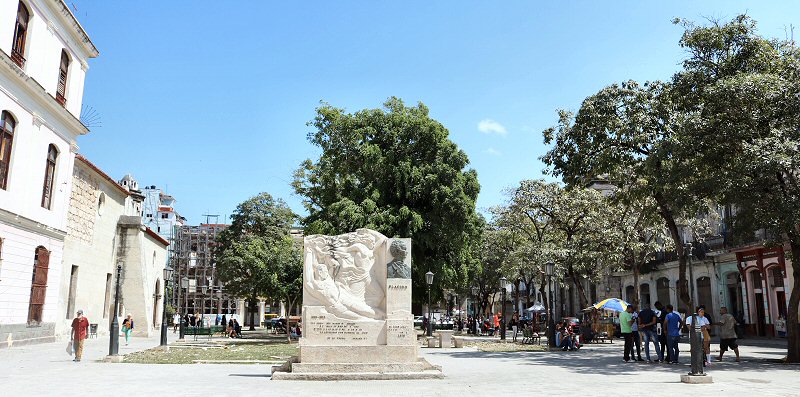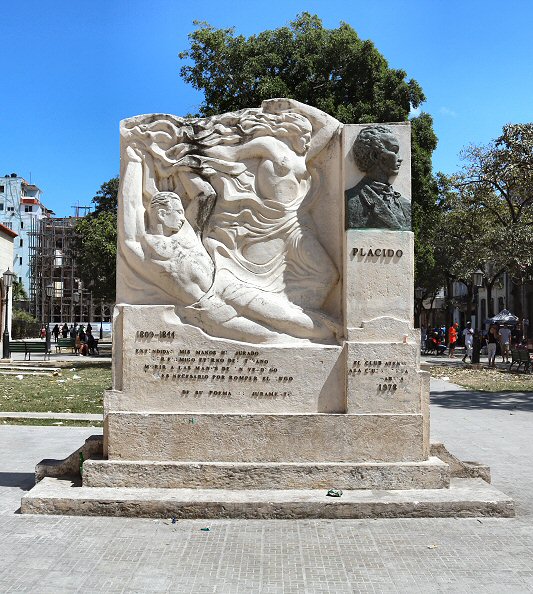Localization
The Plaza del Cristo runs along the Teniente Rey street,
between the Bernaza and the Cristo streets (the section of the
Villegas street, limited with the Plaza del Cristo, is called
the Cristo street).
HISTORY
This intramural
place takes its name from the Iglesia Del Santo Cristo Del
Buen Viaje (Church of
Santo Cristo of Good Voyage) that was built at the north
part of the square in 1640.
In the 18th century it was known as
Plaza Nueva to distinguish it from the current Plaza Vieja,
but later towards the end of the 18th century, when it
turned into a popular open-air food market, it was called
Mercado Nuevo (New Market). It became the commercial center
full of boisterous town hawkers, vendors and customers,
until it was destroyed by a fire in 1863. In the second half
of the 19th century, the square became a public space for the
recreation of the residents of Havana, receiving the name of
the Plaza del Cristo.
The plaza had one of the few water
boxes in the Zanja Real, the first water channel in Havana;
consequently, it was a place where large number of African
washerwomen were gathering that also attended the mass.
Therefore, it was called also the Plaza de las Lavanderas
(Square of the Washerwomen) for a while.
THE PLAZA TODAY
The Plaza del Cristo is the fifth
square in the squares system of the Old Havana; at the same
time, it is the one that is at least known, as it is a
little bit apart from the historical core. Nevertheless, the
square is an ideal place, if you want to get far from
tourist-trodden areas and to witness what the real Cuban
life looks like.

The square is a large, rectangular
space, known by the beautiful church, constituting the final
step (station) on the Via Cruz. The Amargura street
terminates at this square.
In the quiet park of Bernaza, in
front of the door of the former Escuela San Agustín (San
Agustín School), there is the momument erected in memoriam
to the mestizo poet Diego Gabriel de la Concepción Valdés
(1809-1844), also known by his pseudonym Plácido, during the
remodeling process of the square during the period of 1975-
1978. Plácido, the son of a Spanish dancer and a Cuban black
barber, was the most published and most accepted poet on the
island during the 19th century, and he is considered one of the
main references of the romantic poetry in Cuba. He was
imprisoned several times without any reason by the Spanish,
and finally accused of being a member of a false conspiracy,
so that he was shot down at the age of 35.
The monument depicts a relief bust
of the poet, and a relief of a naked woman with a naked man.
A verse from his poem El Juramento (the Oath) is written on
the monument: extendidas mis manos, he jurado / ser enemigo
eterno del tirano / morir a las manos de un verdugo / si es
necesario, por romper el yugo (extended my hands, I have
sworn / to be the eternal enemy of the tyrant / to die at
the hands of an executioner / if necessary, by breaking the
yoke).
In front of the side door of the
church a beautiful red flowering tree, known as the cardinal
(lobelia cardinalis), is planted.
On the southern side of the Plaza
del Cristo, on Teniente Rey street, there is a popular
paladar (home restaurant), El Chanchullero.







